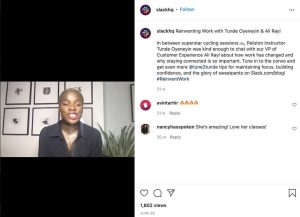How do you increase conversions? Segmentation, of course. Columnist Jordan Elkind lays out five steps to improve your segmentation program.

For marketers, segmentation allows for better personalization, and for customers, that means more relevant messages. Still, segmentation is frequently spoken of as a black-and-white thing for a company — either you are segmenting or you aren’t.
But in reality, the process is what matters, because segments must be kept up-to-date and continuously iterated on and improved so that they allow retailers to hit their goal: better, more targeted emails.
The process by which a company drives its segmentation program forward is what separates the best marketing teams from the industry at large. Below I’ve outlined the five steps many of the teams I work with use to get the most from the customer database.
To help illustrate what that looks like in real life, I’ll also walk through each step in relation to a case study from Crocs showing how it was able to decrease the number of email promotions it sends. (Disclosure: Crocs is a client of Custora, my employer.)
1. Analyze Data
The first step is to take a deep look at your customer data and see what sort of stories emerge. You can do this by a number of different methods, whether you’re looking for more simple insights (How many customers have bought jeans in the past?), trying to answer a specific question (Which customers would be most likely to bite on an offer for shoes?), or implementing more advanced techniques, such as predictive persona segmentation, to more accurately group customers based on likely future purchases (How many different shopper personas does our brand have? What do they look like?). This analytical work can surface insights you can use to run experiments and make predictions.
How Crocs did it: Crocs, like many retailers, was interested in scaling back the number of promotions they were sending. But that can be a scary proposition; if the discounts go away, will customers follow? Still, they wanted to be smarter about sending offers and needed to find a group to test it on. Crocs did some analysis on their customer base in regard to churn and found four segments of “at-risk” customers (all the way from those who were showing initial signs of “fading away” to those who could be considered “lost”).
2. Identify Opportunities
Now that you have an idea and a target audience in mind, determine some of the levers that you could pull. Perhaps you’ve uncovered a subset of customers who tend to shop at a lower price point but have never bought your store’s factory brand before. What sort of creative might make the factory brand appealing? How could that message fit into your larger daily or lifecycle email programs? How would you test it?
How Crocs did it:
Once they identified their target segments, Crocs decided to test different creative, both with and without discount offers, to determine which win-back emails worked best for each segment.
3. Conduct Experiments
This is where the rubber begins to meet the road. It’s time to set up your control group and start testing.
When testing, it’s good to keep a few things in mind. The simple experimental approach is to randomly split creative so one half of the target audience gets one creative, and the other half gets the other. That’s your simple A/B test. (See more pointers here.)
But for bigger-picture tests (those that look at incremental change over time), it’s crucial to hold out a group of customers entirely to be able to compare lift versus a controlled baseline. As your experiments become more complex, with more options included in the test or with multiple experimental groups, it’s crucial to maintain controls across every permutation so that you ensure accurate conclusions.
How Crocs did it:
Each segment was split into three equal groups: a third got no emails, a third received a discount email, and the rest received an email with a message-only call to action.
4. Automate What Works
In our work with e-commerce marketing teams, we’re frequently surprised by how small the average team is. Even at big, well-established brands, the teams are often stretched thin in relation to the challenges that face them. Given this paucity of resources, automation is a great tool.
How Crocs did it:
Crocs ended up seeing that a large percentage of their customers were receptive to purely relationship-based winback emails (no promotions). They’ve been running these campaigns for over four months now and have seen a 10x lift in revenue for these programs, along with a 2x increase in customer spend for those who received non-discount oriented emails vs. the control group who received no emails. The winning versions of these tests will be automated through email campaigns administered by Custora (full disclosure, my employer) through Crocs’ email platform.
5. Repeat
After each successful cycle, teams can treat their wins as a “new baseline” of sorts, as the changes have been adopted, and then start to discover new insights that can lead to additional improvements.
Obviously, experiments do take extra effort, whether that’s from taking the time to surface new insights, getting sign-off from different parts of the organization, or having to develop new creative for email tests. Still, it’s important to try to find bandwidth for bigger-picture tests.
How Crocs did it:
Crocs is now moving to the next phase in its quest to find the perfect promotional strategy. In this phase, it will create and maintain a “price insensitive” customer segment within its email platform to ensure these customers are not emailed promotions and discounts in any type of email campaigns, not just win-back.
Wrapping Up
This process of analysis, opportunity sizing, testing and automation isn’t unique to customer segmentation. We have seen this approach’s effectiveness for top marketers across acquisition and retention, and we’re fans of the way these teams rely on intensive experimentation to keep getting better.
Some opinions expressed in this article may be those of a guest author and not necessarily Marketing Land. Staff authors are listed here.
(Some images used under license from Shutterstock.com.)
Marketing Land – Internet Marketing News, Strategies & Tips
(155)









